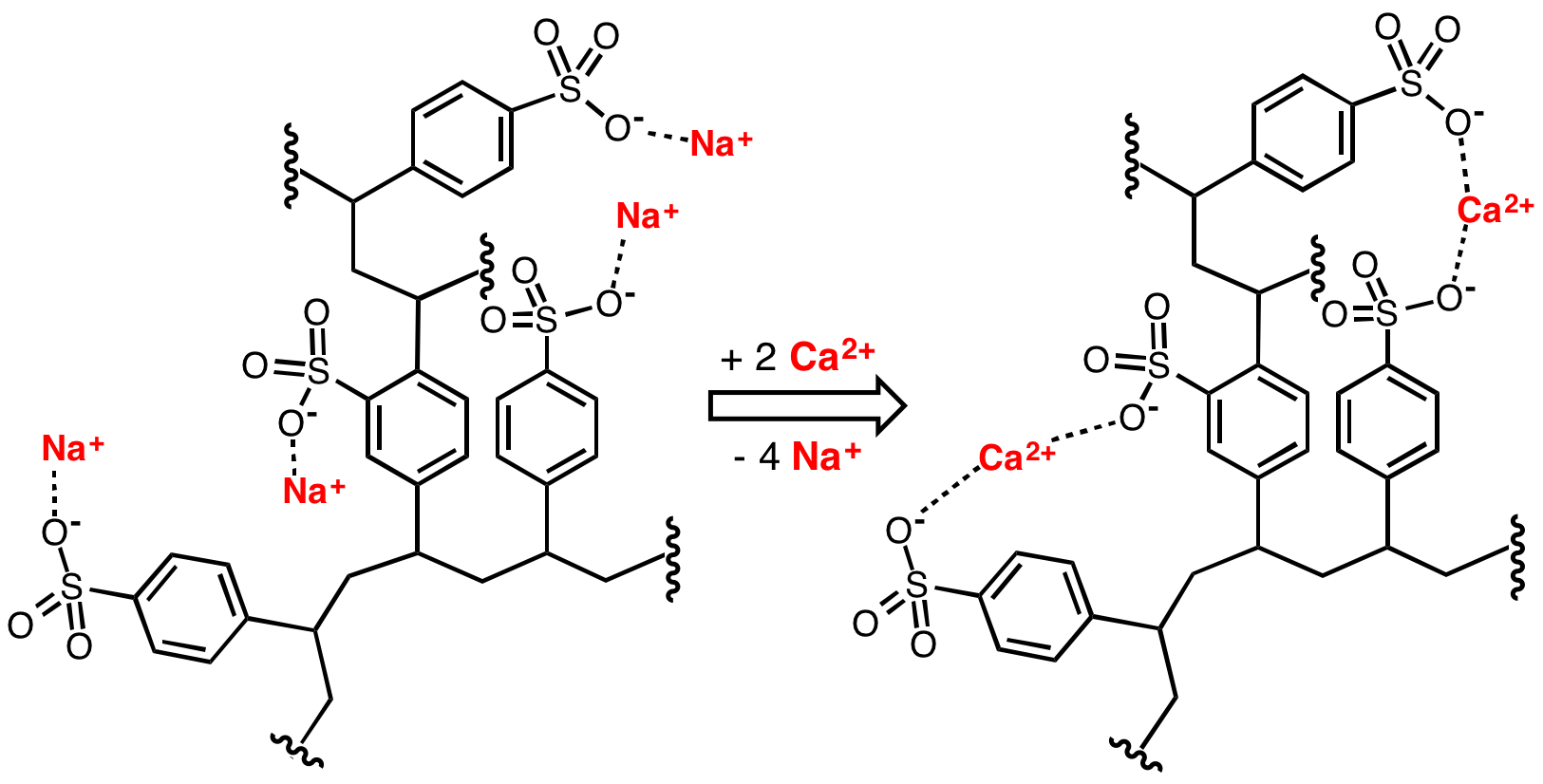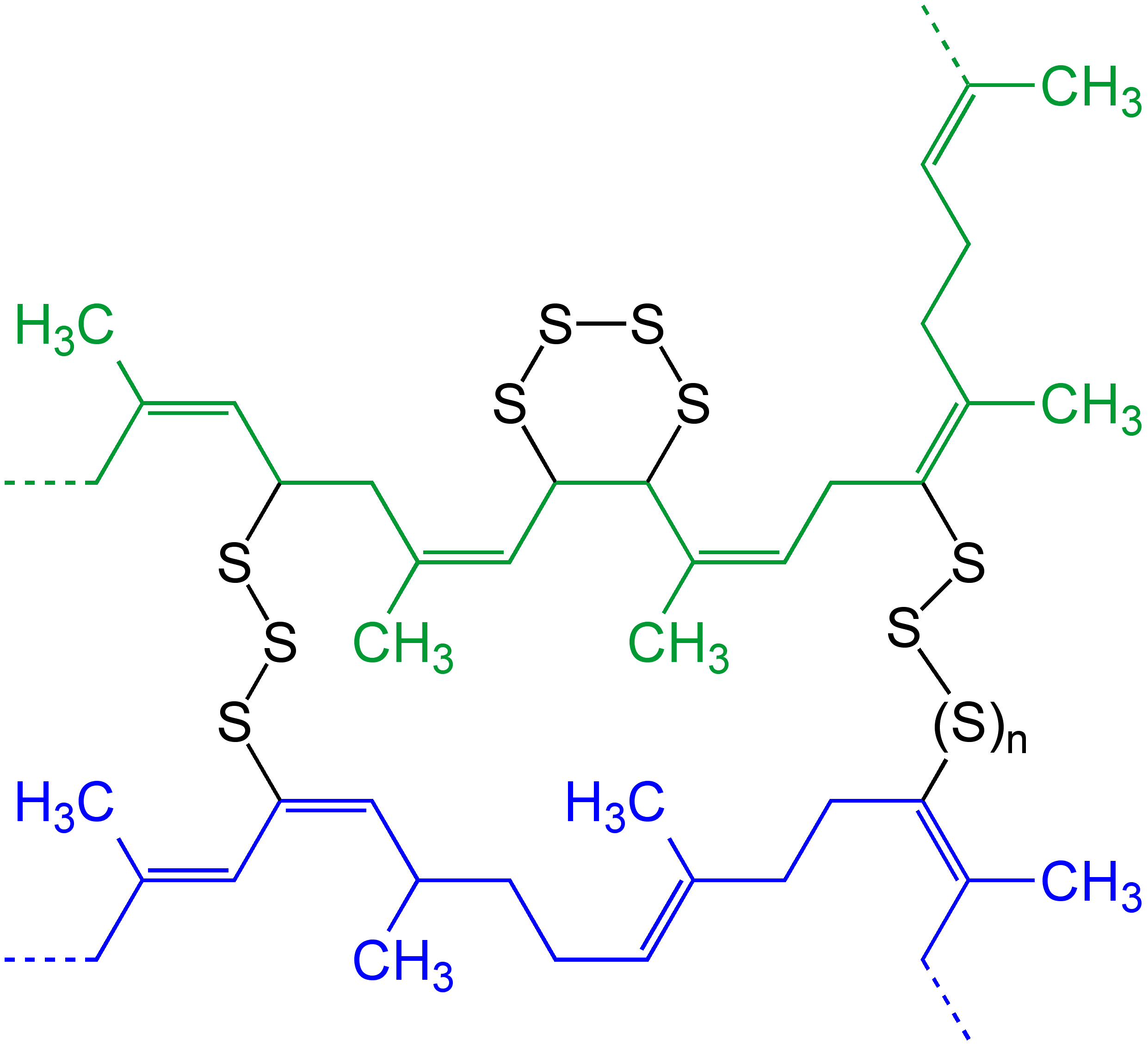|
PolyAMPS
PolyAMPS, or poly(2-acrylamido-2-methyl-1-propanesulfonic acid) (trademark of the Lubrizol Corporation), is an organic polymer. It is water-soluble, forms gels when cross linked, and acts as a strong anionic polyelectrolyte. It can be used for ion exchange resins. It can form hydrogel A hydrogel is a Phase (matter), biphasic material, a mixture of Porosity, porous and Permeation, permeable solids and at least 10% of water or other interstitial fluid. The solid phase is a water Solubility, insoluble three dimensional network ...s. See also * 2-Acrylamido-2-methylpropane sulfonic acid (AMPS) References Acrylate polymers Polyelectrolytes {{polymer-stub ... [...More Info...] [...Related Items...] OR: [Wikipedia] [Google] [Baidu] |
Hydrogel
A hydrogel is a Phase (matter), biphasic material, a mixture of Porosity, porous and Permeation, permeable solids and at least 10% of water or other interstitial fluid. The solid phase is a water Solubility, insoluble three dimensional network of polymers, having absorbed a large amount of water or biological fluids. Hydrogels have several applications, especially in the biomedical area, such as in hydrogel dressing. Many hydrogels are synthetic, but some are derived from natural materials. The term "hydrogel" was coined in 1894. Chemistry Classification The crosslinks which bond the polymers of a hydrogel fall under two general categories: physical hydrogels and chemical hydrogels. Chemical hydrogels have Covalent bond, covalent cross-linking bonds, whereas physical hydrogels have non-covalent bonds. Chemical hydrogels can result in strong reversible or irreversible gels due to the covalent bonding. Chemical hydrogels that contain reversible covalent cross-linking bonds, ... [...More Info...] [...Related Items...] OR: [Wikipedia] [Google] [Baidu] |
Ion Exchange Resin
An ion-exchange resin or ion-exchange polymer is a resin or polymer that acts as a medium for ion exchange, that is also known as an ionex. It is an solubility, insoluble matrix (or support structure) normally in the form of small (0.25–1.43 mm radius) microbeads, usually white or yellowish, fabricated from an organic chemistry, organic polymer substrate. The beads are typically porosity, porous (with a specific size distribution that will affect its properties), providing a large surface area on and inside them where the trapping of ions occurs along with the accompanying release of other ions, and thus the process is called ion exchange. There are multiple types of ion-exchange resin, that differ in composition if the target is an anion or a cation and are created based on the task they are required for. Most commercial resins are made of polystyrene sulfonateFrançois Dardel and Thomas V. Arden "Ion Exchangers" in Ullmann's Encyclopedia of Industrial Chemistry, 2008, Wiley ... [...More Info...] [...Related Items...] OR: [Wikipedia] [Google] [Baidu] |
Poly(AMPS)
Poly, from the Greek πολύς meaning "many" or "much", may refer to: Businesses * China Poly Group Corporation, a Chinese business group, and its subsidiaries: ** Poly Property, a Hong Kong incorporated Chinese property developer ** Poly Real Estate, a Chinese real estate developer ** Poly Technologies, a defense manufacturing company * Poly (company), formerly Polycom, an American communications technology company People * Poly (footballer) (1906-1986), full name Policarpo Ribeiro de Oliveira, Brazilian footballer * Natasha Poly (born 1985), stage name of Russian supermodel Natalya Sergeyevna Polevshchikova * Poly Styrene (1957–2011), stage name of British musician Marianne Joan Elliott-Said Polytechnic * Hong Kong Polytechnic University, locally known as Poly * Polytechnic Heights, Fort Worth, Texas, neighborhood locally known as Poly * Polytechnic Institute of NYU (now New York University Tandon School of Engineering), locally known as Poly * ''The Rensselaer Polytech ... [...More Info...] [...Related Items...] OR: [Wikipedia] [Google] [Baidu] |
Lubrizol
Lubrizol Corporation is an American provider of specialty chemicals for the transportation, industrial and consumer markets. These products include additives for engine oils and other transportation-related fluids, additives for industrial lubricants, and additives for gasoline and diesel fuel. In addition, Lubrizol makes ingredients and additives for personal care products, pharmaceuticals and medical devices, specialty materials, including plastics technology, and coatings in the form of specialty resins and additives. Since 2011, Lubrizol has been a subsidiary of Berkshire Hathaway. It generated $6.5 billion in revenue in 2016 and has an employee headcount of approximately 8,300 people globally. History The Lubrizol Corporation was founded in 1928 as The Graphite Oil Products Company in Cleveland, Ohio, by father Frank A. Nason and son Francis A. "Alex" Nason, Thomas W. James and brothers Kent H. Smith, Vincent K. Smith and A. Kelvin Smith. The company's first product was ... [...More Info...] [...Related Items...] OR: [Wikipedia] [Google] [Baidu] |
Polymer
A polymer () is a chemical substance, substance or material that consists of very large molecules, or macromolecules, that are constituted by many repeat unit, repeating subunits derived from one or more species of monomers. Due to their broad spectrum of properties, both synthetic and natural polymers play essential and ubiquitous roles in everyday life. Polymers range from familiar synthetic plastics such as polystyrene to natural biopolymers such as DNA and proteins that are fundamental to biological structure and function. Polymers, both natural and synthetic, are created via polymerization of many small molecules, known as monomers. Their consequently large molecular mass, relative to small molecule compound (chemistry), compounds, produces unique physical property, physical properties including toughness, high rubber elasticity, elasticity, viscoelasticity, and a tendency to form Amorphous solid, amorphous and crystallization of polymers, semicrystalline structures rath ... [...More Info...] [...Related Items...] OR: [Wikipedia] [Google] [Baidu] |
Cross Link
In chemistry and biology, a cross-link is a bond or a short sequence of bonds that links one polymer chain to another. These links may take the form of covalent bonds or ionic bonds and the polymers can be either synthetic polymers or natural polymers (such as proteins). In polymer chemistry "cross-linking" usually refers to the use of cross-links to promote a change in the polymers' physical properties. When "crosslinking" is used in the biological field, it refers to the use of a probe to link proteins together to check for protein–protein interactions, as well as other creative cross-linking methodologies. Although the term is used to refer to the "linking of polymer chains" for both sciences, the extent of crosslinking and specificities of the crosslinking agents vary greatly. Synthetic polymers : 260px, left, Chemical reactions associated with crosslinking of drying oils, the process that produces curing'' refers to the crosslinking of thermosetting">linoleum. Cros ... [...More Info...] [...Related Items...] OR: [Wikipedia] [Google] [Baidu] |
Polyelectrolyte
Polyelectrolytes are polymers whose repeating units bear an electrolyte group. Polycations and polyanions are polyelectrolytes. These groups dissociate in aqueous solutions (water), making the polymers charged. Polyelectrolyte properties are thus similar to both electrolytes ( salts) and polymers (high molecular weight compounds) and are sometimes called polysalts. Like salts, their solutions are electrically conductive. Like polymers, their solutions are often viscous. Charged molecular chains, commonly present in soft matter systems, play a fundamental role in determining structure, stability and the interactions of various molecular assemblies. Theoretical approaches to describe their statistical properties differ profoundly from those of their electrically neutral counterparts, while technological and industrial fields exploit their unique properties. Many biological molecules are polyelectrolytes. For instance, polypeptides, glycosaminoglycans, and DNA are polyelectrol ... [...More Info...] [...Related Items...] OR: [Wikipedia] [Google] [Baidu] |
2-Acrylamido-2-methylpropane Sulfonic Acid
2-Acrylamido-2-methylpropane sulfonic acid (AMPS) was a Trademark name by The Lubrizol Corporation. It is a reactive, hydrophilic, sulfonic acid acrylic monomer used to alter the chemical properties of wide variety of anionic polymers. In the 1970s, the earliest patents using this monomer were filed for acrylic fiber manufacturing. Today, there are over several thousands patents and publications involving use of AMPS in many areas including water treatment, oil field, construction chemicals, hydrogels for medical applications, personal care products, emulsion coatings, adhesives, and rheology modifiers. Lubrizol discontinued the production of this monomer in 2017 due to copy-cat production from China and India destroying the profitability of this product. Production AMPS is made by the Ritter reaction of acrylonitrile and isobutylene in the presence of sulfuric acid and water. The recent patent literature describes batch and continuous processes that produce AMPS in high purity ... [...More Info...] [...Related Items...] OR: [Wikipedia] [Google] [Baidu] |
Acrylate Polymers
An acrylate polymer (also known as acrylic or polyacrylate) is any of a group of polymers prepared from acrylate monomers. These plastics are noted for their transparency, resistance to breakage, and elasticity. Acrylate polymer is commonly used in cosmetics, such as nail polish, as an adhesive. History The first synthesis of acrylic polymer was reported by G. W. A. Kahlbaum in 1880. Acrylic elastomers Acrylic elastomer is a general term for a type of synthetic rubber whose primary component is acrylic acid alkylester ( ethyl or butyl ester). Acrylic elastomer possesses characteristics of heat and oil resistance, with the ability to withstand temperatures of 170–180 °C. It is used primarily for producing oil seals and packaging related to automobiles. Acrylic elastomer can generally be characterized as one of two types. "Old" types include ACM (copolymer of acrylic acid ester and 2-chloroethyl vinyl ether) containing chlorine and ANM (copolymer of acrylic acid ester ... [...More Info...] [...Related Items...] OR: [Wikipedia] [Google] [Baidu] |




